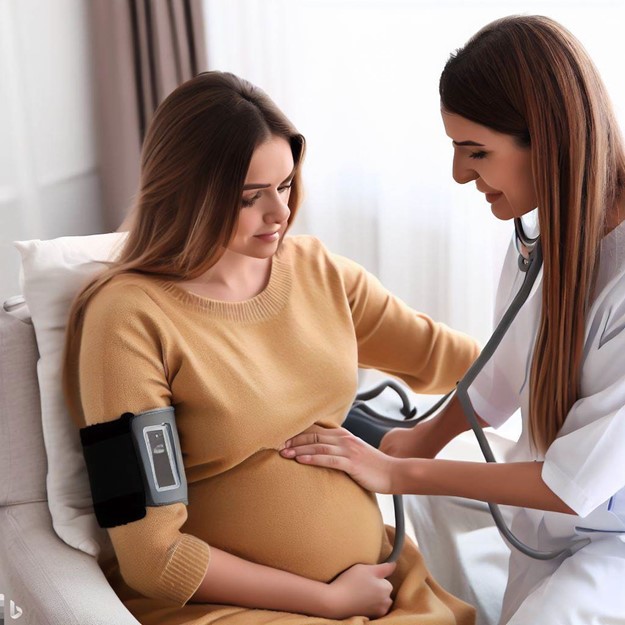What is the primary rationale for monitoring a new mother every 15 minutes for the first hour after delivery?
To check for postpartum hemorrhage
To determine if the mother's milk is coming in
To monitor the mother's blood pressure to note any elevations
To answer questions the new parents may have
The Correct Answer is A
To check for postpartum hemorrhage.
This is because postpartum hemorrhage is a serious and potentially life-threatening complication that can occur within 24 hours of birth or later. It is defined as a blood loss of more than 500 mL in a vaginal delivery or more than 1000 mL in a cesarean delivery. The most common cause of postpartum hemorrhage is uterine atony, which is the failure of the uterus to contract after delivery. Other causes include lacerations, retained placental fragments, coagulation disorders, and uterine rupture. Monitoring the vital signs, especially blood pressure, and pulse, can help detect signs of hypovolemia due to blood loss. Other signs include pale skin, cold and clammy extremities, delayed capillary refill, decreased urine output, and altered mental status.
Choice B is not correct because determining if the mother's milk is coming in is not the primary rationale for monitoring a new mother every 15 minutes for the first hour after delivery. Milk production usually begins around 48 to 72 hours after delivery and is influenced by hormonal changes, breastfeeding frequency, and maternal health. Although breastfeeding support is important for postpartum care, it is not a priority over checking for postpartum hemorrhage.
Choice C is not correct because monitoring the mother's blood pressure to note any elevations is not the primary rationale for monitoring a new mother every 15 minutes for the first hour after delivery. Elevated blood pressure can indicate gestational hypertension or preeclampsia, which are serious conditions that can affect postpartum women. However, these conditions are more likely to cause symptoms such as headache, blurred vision, epigastric pain, and proteinuria⁴.
Moreover, blood pressure may not be a sensitive indicator of blood loss and may remain normal until a significant amount of blood is lost¹.
Choice D is not correct because answering questions the new parents may have is not the primary rationale for monitoring a new mother every 15 minutes for the first hour after delivery. Although providing education and support to the new parents is an essential part of postpartum care, it is not a priority over checking for postpartum hemorrhage. The new parents may have questions about infant care, feeding, contraception, recovery, and other topics that can be addressed during the postpartum period.
Nursing Test Bank
Naxlex Comprehensive Predictor Exams
Related Questions
Correct Answer is D
Explanation
Hemorrhage. This is because postpartum hemorrhage (PPH) is severe bleeding and loss of blood after childbirth that can lead to death. The most common cause of PPH is the uterus not contracting properly after delivery. The nurse needs to monitor the client’s pulse and blood pressure frequently to detect signs of shock and blood loss.
Choice A is wrong because thromboembolism is a blood clot that blocks a blood vessel, not a complication of bleeding.
Choice B is wrong because cervical laceration is a tear in the cervix that can cause bleeding, but it is not a common cause of PPH.
Choice C is wrong because hemorrhoids are swollen veins in the anus or rectum that can cause bleeding, but they are not a common cause of PPH.

Correct Answer is C
Explanation
Fullness of the bladder. A boggy uterus with the fundus above the umbilicus and deviated to the side indicates that the uterus is not contracting properly and may be displaced by a full bladder. A full bladder can interfere with uterine involution and increase the risk of postpartum hemorrhage. The nurse should assess the bladder and assist the patient to empty it if needed.
Choice A. Blood pressure is not the next assessment because it is not related to the position and tone of the uterus. Blood pressure may be affected by blood loss, but it is not a priority in this situation.
Choice B. Amount of lochia is not the next assessment because it is not related to the position and tone of the uterus. Lochia may be increased or decreased depending on the uterine contraction, but it is not a priority in this situation.
Choice D. Level of pain is not the next assessment because it is not related to the position and tone of the uterus. Pain may be present due to uterine cramping or other factors, but it is not a priority in this situation.
Whether you are a student looking to ace your exams or a practicing nurse seeking to enhance your expertise , our nursing education contents will empower you with the confidence and competence to make a difference in the lives of patients and become a respected leader in the healthcare field.
Visit Naxlex, invest in your future and unlock endless possibilities with our unparalleled nursing education contents today
Report Wrong Answer on the Current Question
Do you disagree with the answer? If yes, what is your expected answer? Explain.
Kindly be descriptive with the issue you are facing.
